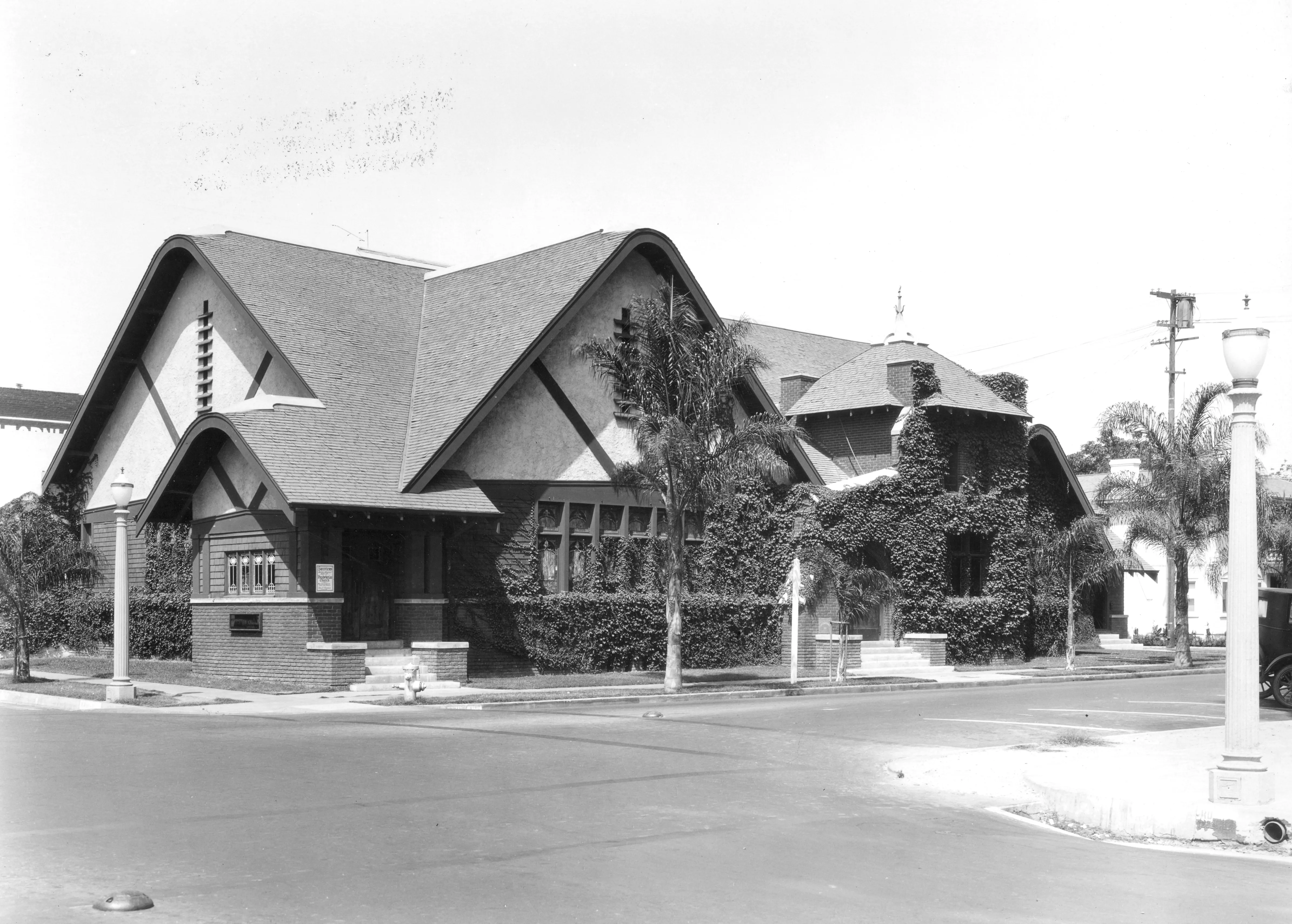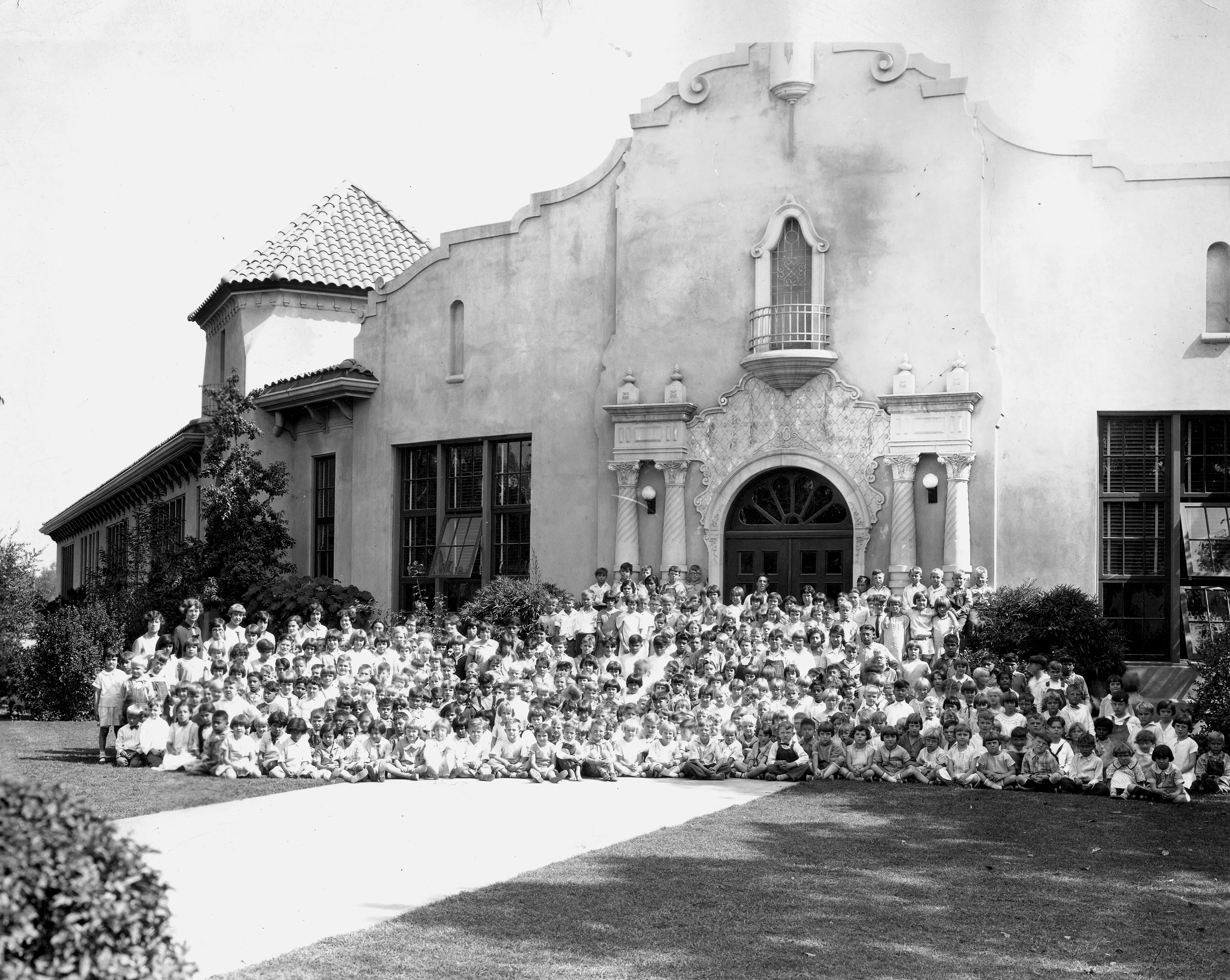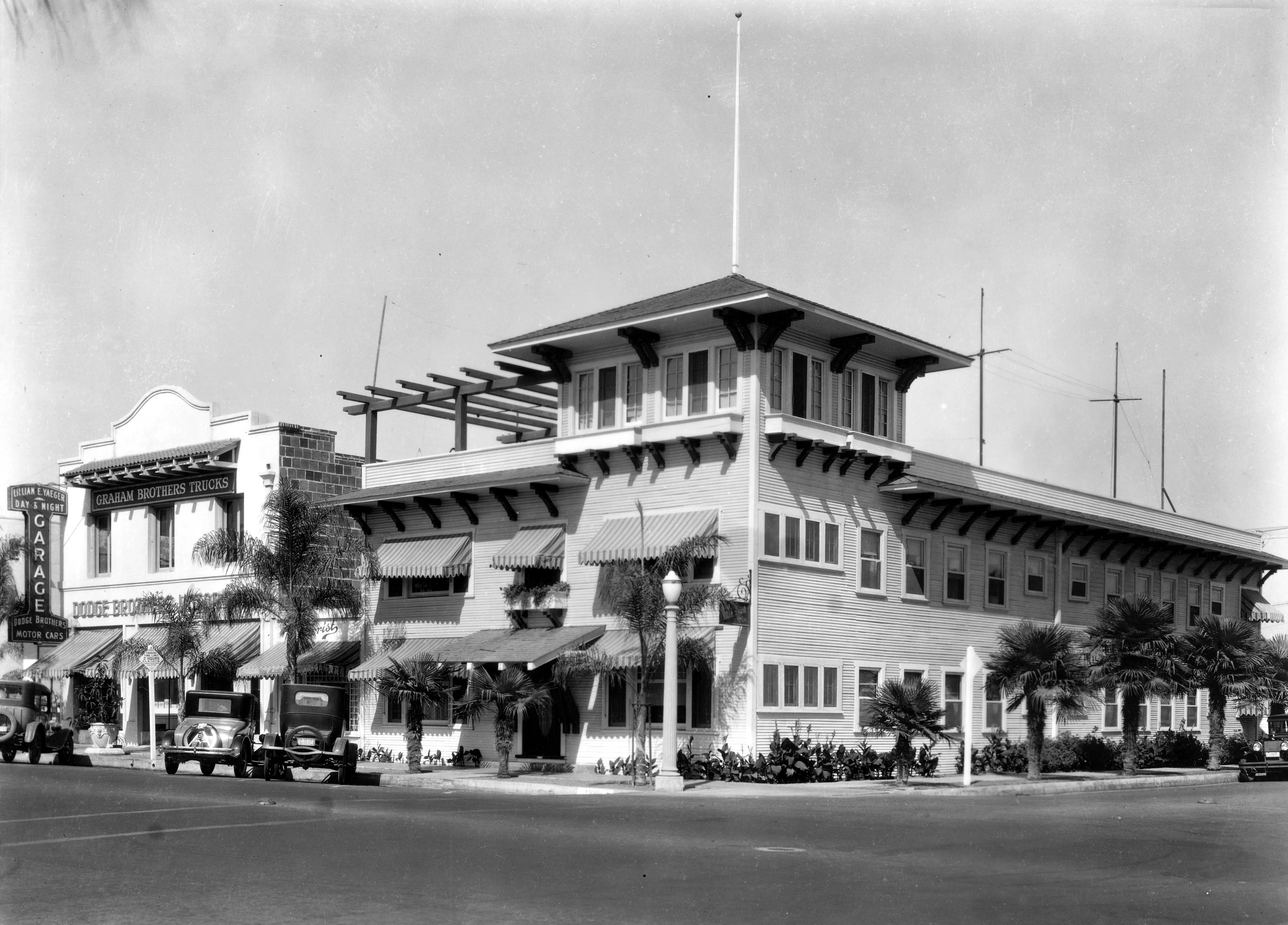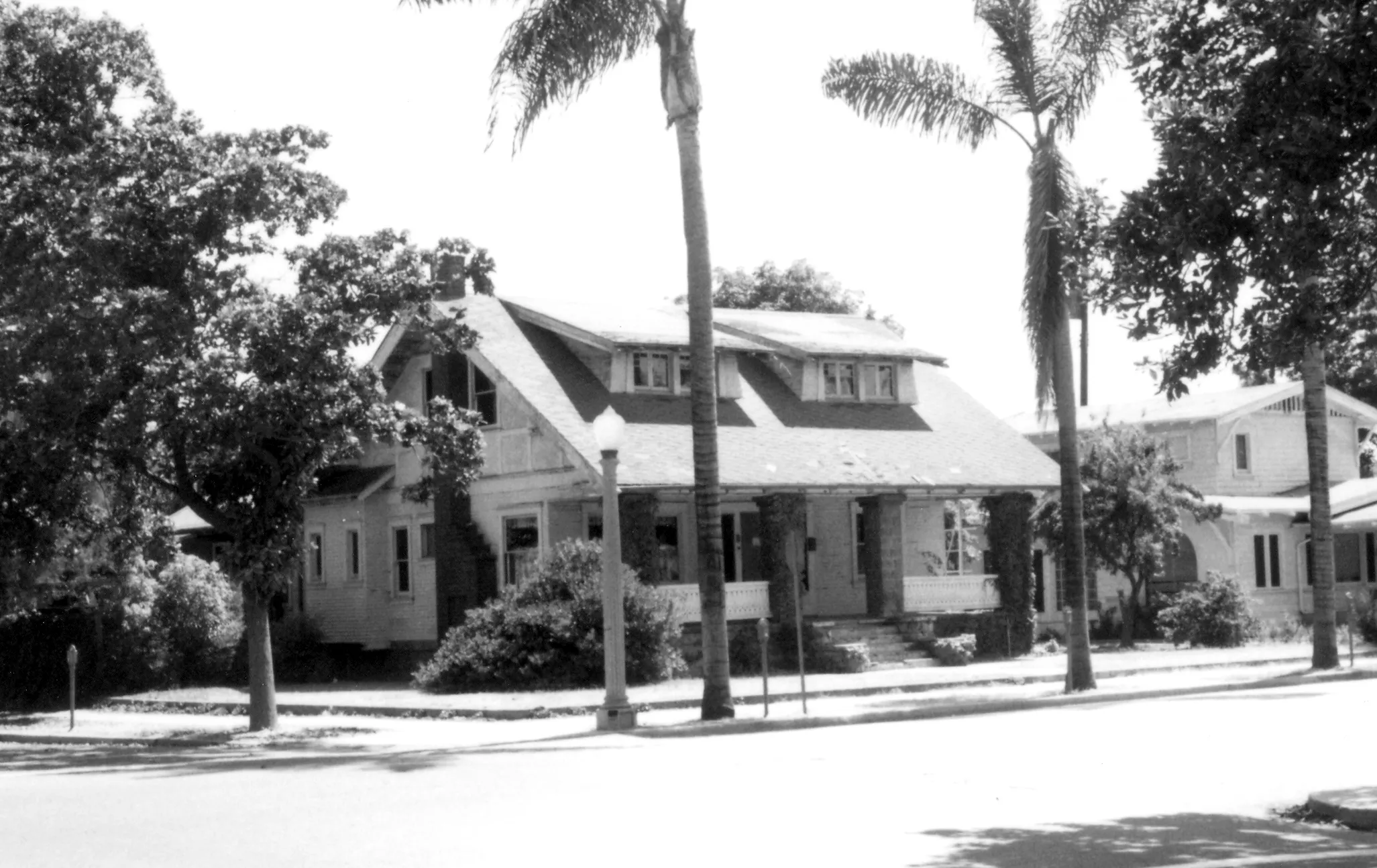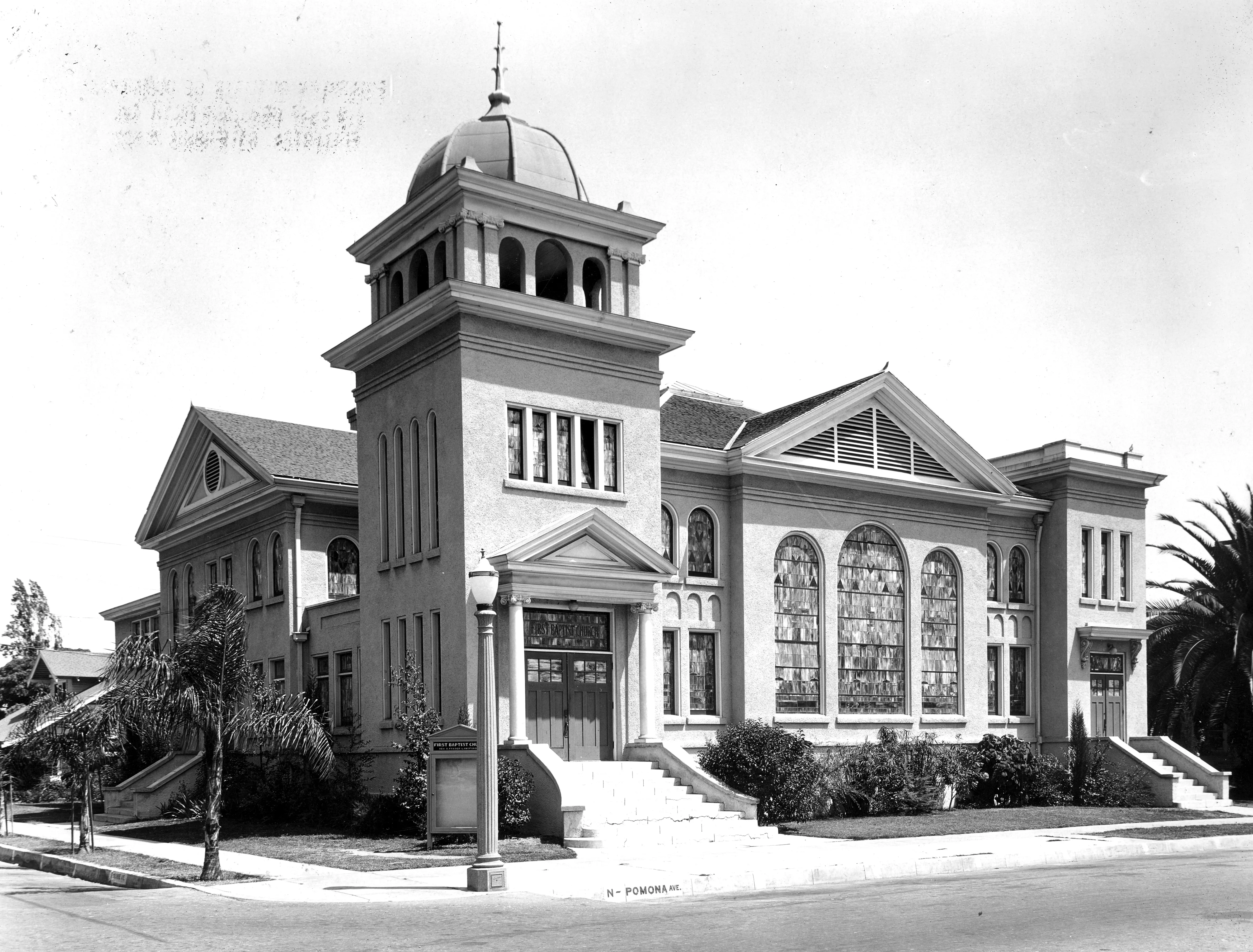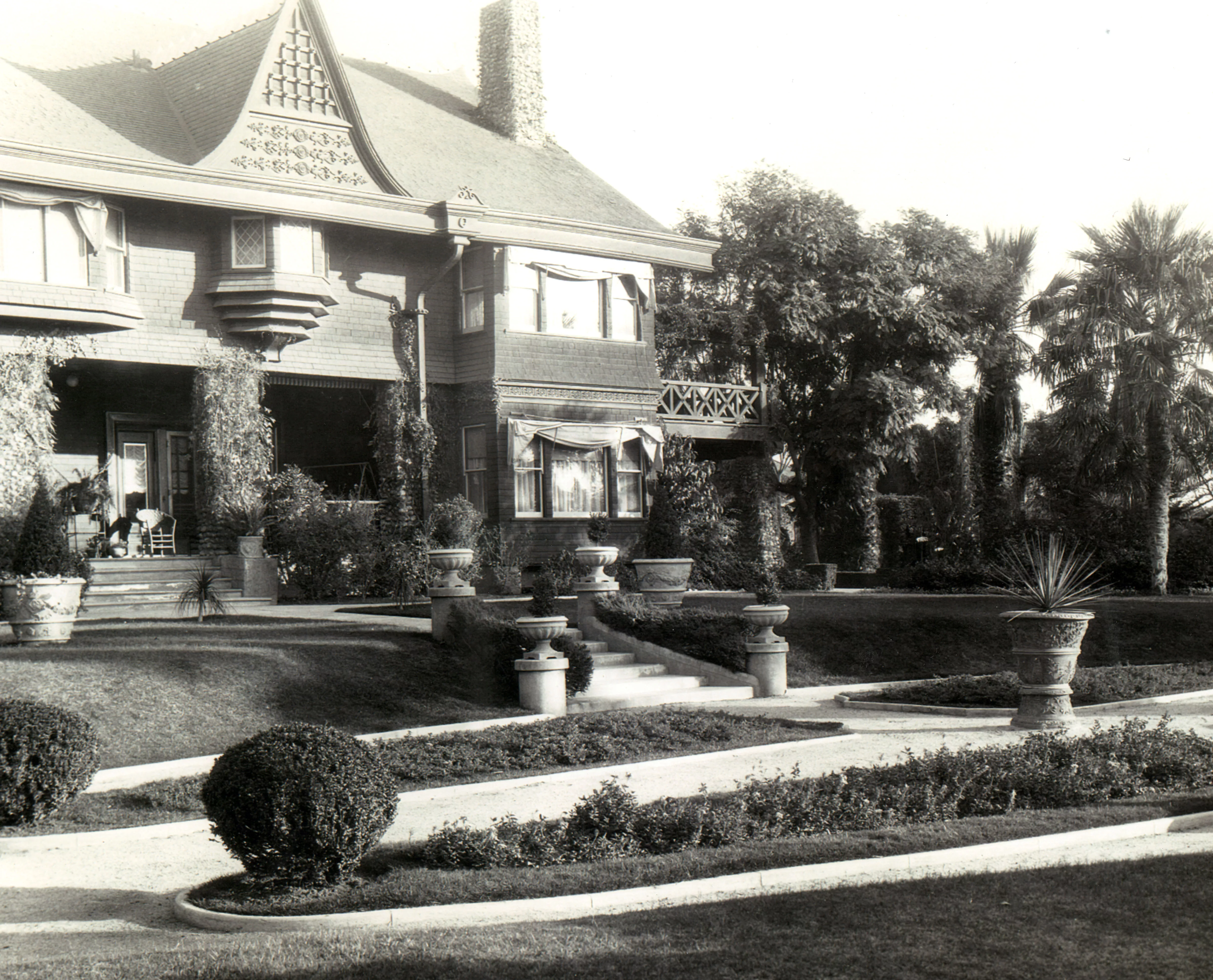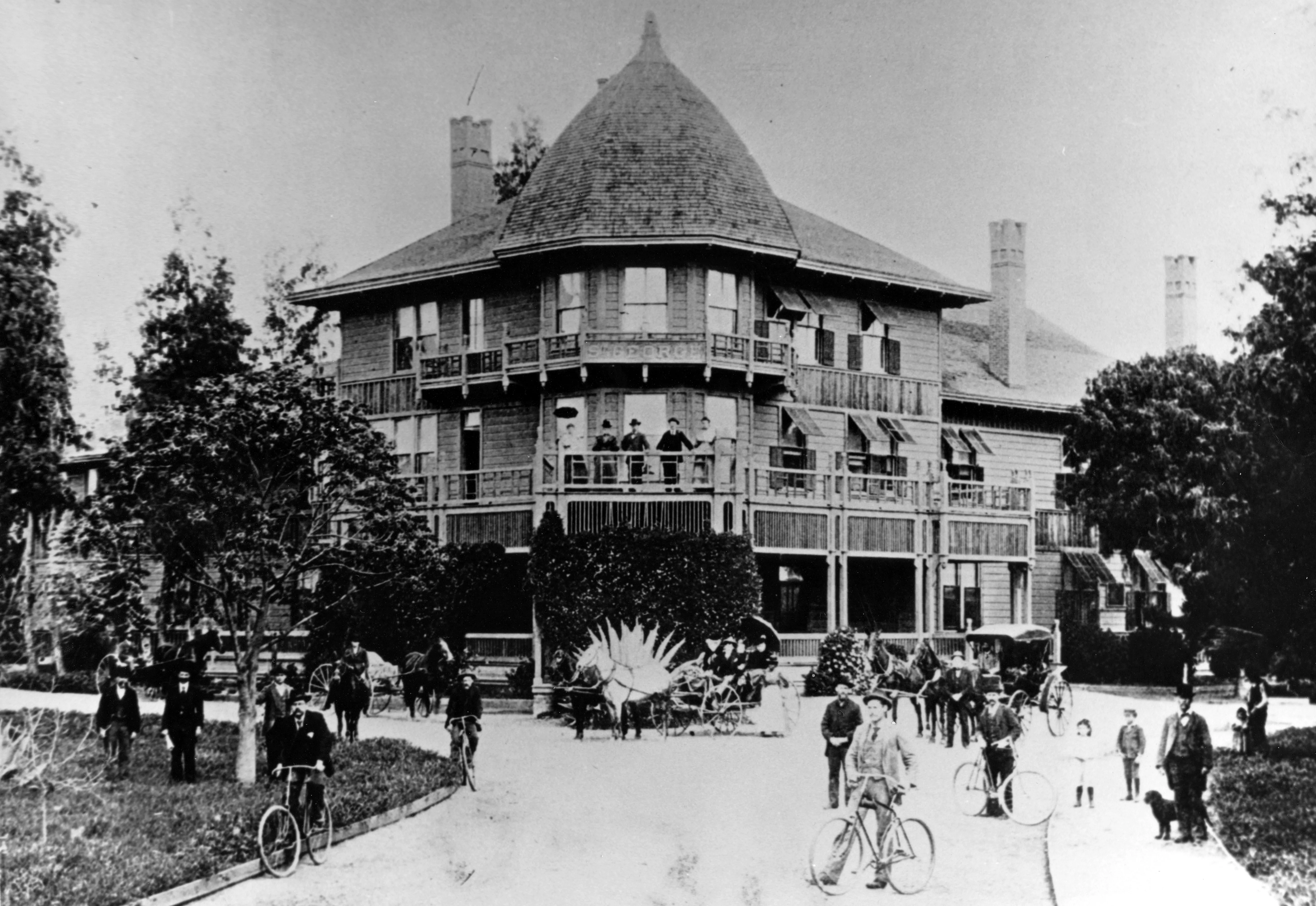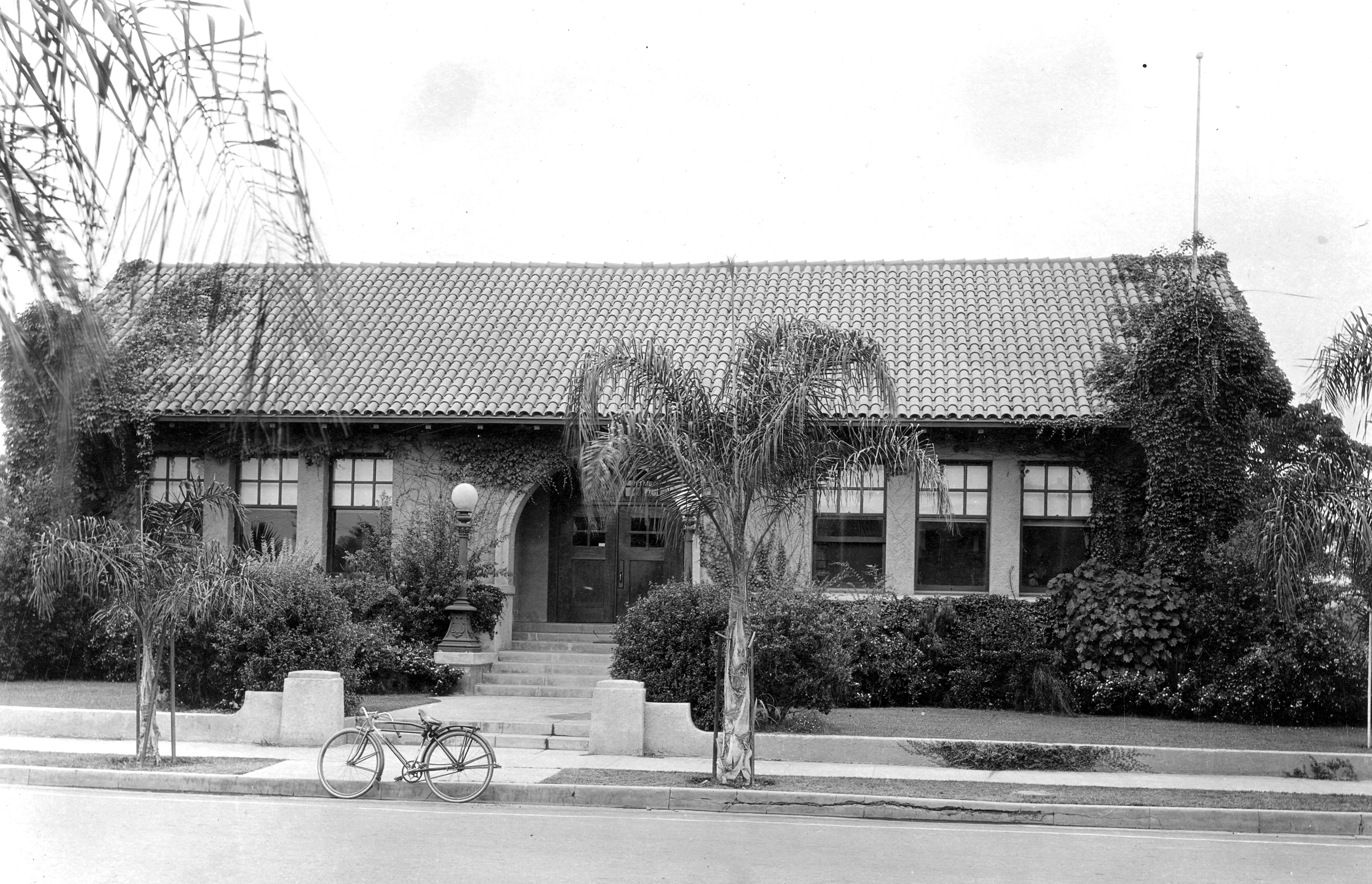First Christian Church – razed 1971
When Charles Chapman, the City’s first mayor, moved to Fullerton in 1898, there was no Christian Church so he attended a church in Anaheim. Looking forward to having a church in his hometown, Chapman purchased a lot in 1904 at the northeast corner of Harbor and Commonwealth for construction of a small chapel. When the congregation outgrew this tiny building, it was replaced in 1911 with this stunning brick veneer Tudor Revival Church. Well-known architect Norman Marsh, who specialized in churches and schools, and noted for hundreds of buildings he designed throughout Southern California, was commissioned to develop the design. The church featured maple pews, frescoed walls, cathedral glass windows, and tapestry carpeting. The church was the only Tudor Revival styled religious building in Fullerton. It was razed in 1971 to make way for the current First Christian Church building.
Chapman Elementary School – razed 1950
Chapman School was built in 1920 and this photo shows the pupils gathered at the front entrance in 1928 on the southeast corner of Chapman and Lemon. The school was damaged in the 1933 earthquake and extensive repairs were undertaken at the cost of over $50,000. This reconstruction made it “safe for children”, provided improved classroom facilities, enlarged library, improved lighting, steam heat, and a separate kindergarten unit. Chapman School was demolished in 1950. The property is now owned by Fullerton College.
Marwood Apartments – razed 1980
Dr William Wicket, son-in-law of Charles Chapman, built the Marwood Apartments and Bungalow Court in 1913 on the northeast corner of Harbor and Whiting. They were sold in 1916 to A.R. Marson for $20,000, and later acquired by the legendary Lillian Yaeger in 1923 for an astounding $80,000. In 1927 the name of the building changed to the El Mirasol Apartments. They became part of Fullerton history when they were demolished in 1980.
Linebarger House – razed 1981
Located at the southwest corner of Pomona and Wilshire, this large Craftsman-style bungalow was built sometime around 1911 for local pioneer businessman Dallison Smith Linebarger, an Orange County Supervisor from 1902 to 1912. In 1917 he sold the house to Harold Walberg, head of the music departments at Fullerton High School and Fullerton Junior College, and director of the Orange County Symphony Orchestra. The City purchased the property, and the house was demolished in 1981 when the Wilshire public parking structure was built. The lot was developed into a downtown park to complement the plaza.

